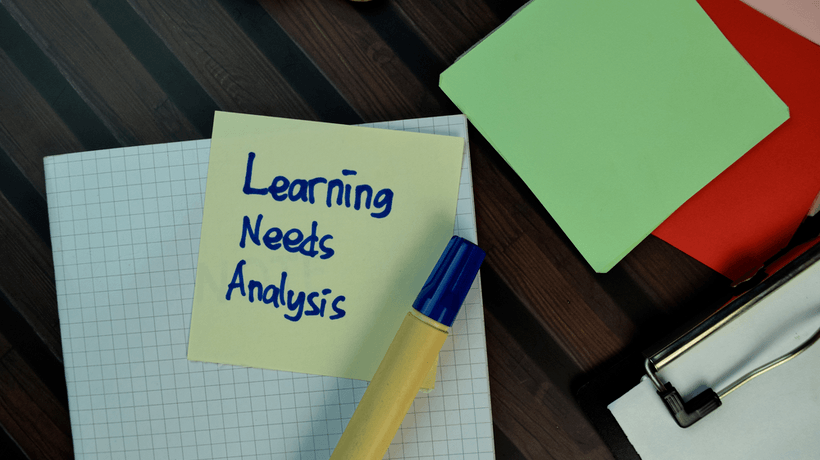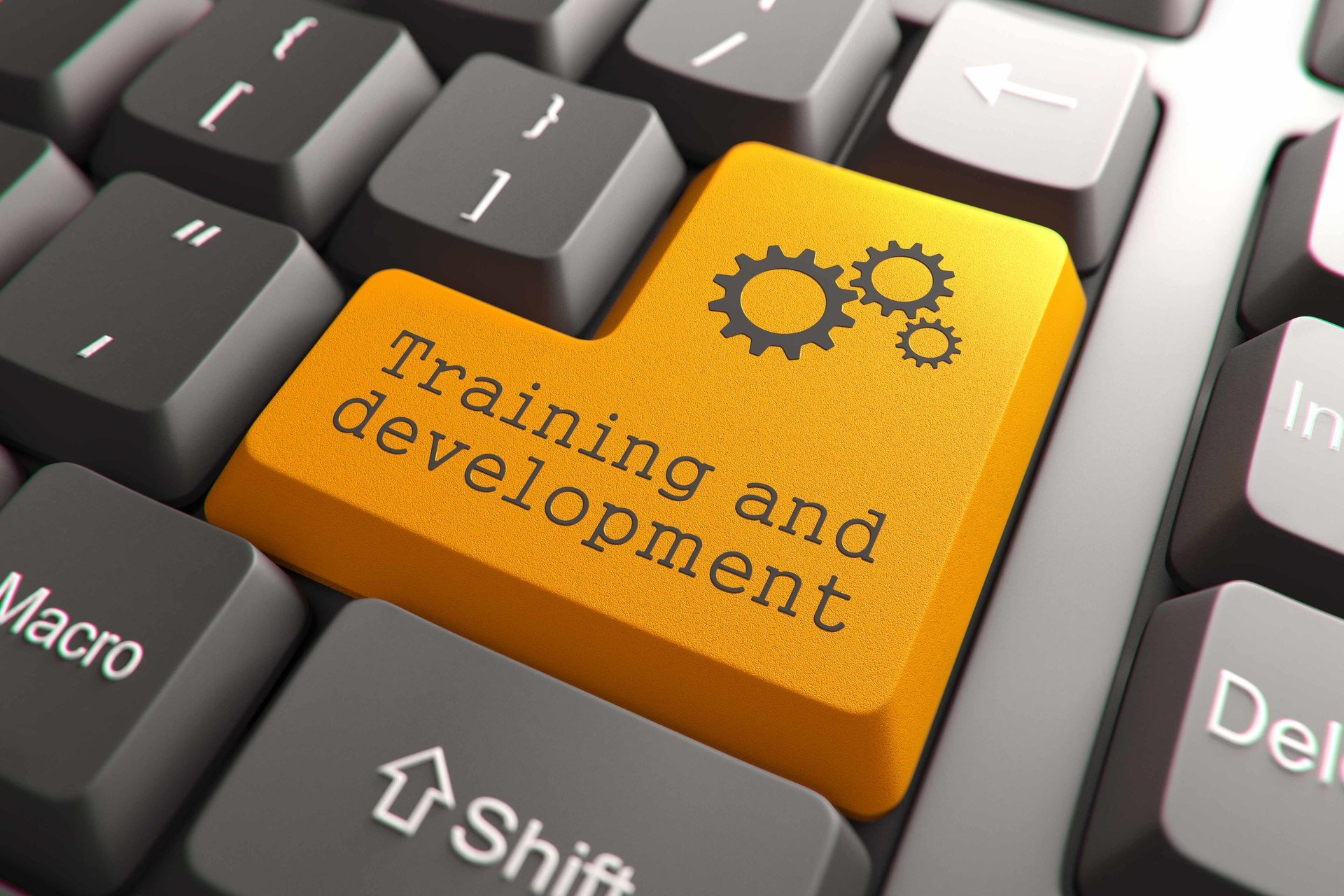Base Your 2023 L&D Strategy On These Corporate Training Needs
L&D is now responsible for addressing challenges which are getting more complex, more immediate, and more wide-reaching. Each of them demands attention, empathy, and action. In addition to addressing regular training requirements, L&D teams need to make sure training is adding to the overall organizational competency. It means they need to align training outcomes to business needs and find ways to bridge the skill gap in order to meet those business goals.
L&D is no longer a support function but a comprehensive strategy that is driven by CXO-level initiatives. With the changes in workplace dynamics and the resulting awakening on making the workplace more human-centric, it is now widely accepted that training is the most effective tool for better employee experience, improving wellbeing, and creating an impact on productivity. From diversity, equity and inclusion to developing leaders for the future to rapid upskilling, training is now a measurable mode of driving change in thinking and behavior.
Here are a few training needs that should be in your roadmap for your 2023 L&D strategy. These are some of the most important ones in the context of retaining talent and continuing to thrive in a VUCA (volatile, uncertain, complex, ambiguous) business context.
Induction And Onboarding
Overall, only 29% of new hires felt they were prepared and supported to excel in their new role. – Gallup
One aspect of the talent lifecycle that completely turned on its head over the period of the pandemic and the current hybrid model of working is the onboarding process. In these new realities of a hybrid workplace, it can be incredibly challenging to integrate new hires and promote your organizational culture.
Over and beyond these challenges, employees today look for purpose, involvement, and growth in their workplace—these factors significantly affect a company’s ability to attract and retain talent. In such an environment, old-school onboarding and induction approaches are no longer relevant.
Some of the challenges organizations face are as follows:
- New hires working remotely (typically from home) may not have access to the required technology or infrastructure.
- Help, support, and motivation that hybrid workplaces cannot provide to onboarded staff at the same level as the new hires working on-site.
- Less time, either online or in person, devoted by managers to newly onboarded staff.
- Highly compressed onboarding time frames.
- Conflicting messages received from virtual and in-person sources.
- Divergent expectations from supervisors, managers, and peers working in partially online and partially in-person workplaces.
Organizations need to address these challenges through a comprehensive onboarding journey aligned to specific roles and personas and have a way to track impact. Some of the techniques that can be used are as follows:
- Adding preboarding to the process.
- Structuring the employee onboarding training into smaller chunks, like additional orientation, role-specific resources and responsibilities, and networking and collaboration.
- Continuing the connect and ongoing learning (after the completion of the employee onboarding training) through multiple follow-ups and refresher training.
- Track the time-to-productivity (TTP) and align the journey to meet the expected TTP.
Your goal should be to reduce the TTP to align skills to the org goals. Some of the strategies to shorten TTP through well-designed induction and onboarding programs include training based on SMART goals, personalized training, blended learning, mobile learning, microlearning, and social learning.
Leadership Capability Building
L&D professionals in organizations with high performance feel that leadership skills are most important for the future (18%) – Workplace Learning Report LinkedIn Learning
Strong leadership creates high-performing teams that, in turn, generate the required business results. Organizations need to rethink how they develop their leaders, especially in the hybrid workplace.
They should have:
- A framework to develop leaders at all levels—across countries, functions, and levels.
- A transition from a program or an event-based approach to a learning journey with personalized learning.
- A just-in-time approach that develops all critical and future leadership capabilities and ensures that they are embedded in daily work.
- Specific metrics/KPIs to improve business performance through learning.
Digital Fluency
Working remotely during the pandemic has meant that many organizations have been forced to engage with digital tools in a way that they hadn’t needed or wanted to before. – Mindtools, Learner Intelligence Report, 2022
Organizations constantly feel the need to build digital fluency and transformation for their workforce to keep pace with the changing technology trends. Employees need to have a consistent level of awareness and understanding of the latest technologies that can be useful tools for productivity, quality, and efficiency in the workplace. It is equivalent to being able to “speak” the language. It helps with overall effectiveness in communication and collaboration, too.
Whether it is about seamlessly communicating with virtual teams or using the right productivity tools and platforms, digital fluency is needed to work effectively in a remote environment and to meet the overall organizational objectives of a higher global competency metric.
Diversity, Equity, Inclusion, And Cultural Intelligence
Only 20% of companies hold themselves fully accountable for inclusion and diversity. – Bersin HR Prediction of 2022
There is no question about the fact that a safe, human-centered, and inclusive workplace can be more productive, efficient, and flexible and can drive creativity in ways that meet great customer experiences. The hybrid workplace has brought in that realization through a lot of trial and error. But organizations still have a long way to go in meeting the mandates of an inclusive environment. Understanding the people and teams that employees work with is critical to achieving common goals set by managers and business leaders.
Organizations need to address the “why” behind DEI, which is awareness about one’s own culture and that of others. Our core human nature is to see difference as a threat and reject it or not engage with it. L&D first needs to understand that just rolling out a compliance training on DEI and maintaining status quo on work styles and interactions with employees from diverse cultures and geographies is not going to build a high-performing, connected workforce. The idea is to build cultural intelligence and seek how diverse people can feel connected, valued, and “belong.”
DEI training is about bringing positive change in workplace behaviors and biases and needs to have an approach that is driven through a structured DEI learning ecosystem. It should include a journey which helps create awareness and mindset change, adopts immersive learning strategies, and reinforces learning with job aids—microlearning to battle the forgetting curve, coaching, feedback, and collaborative learning.
Rapid Upskilling
Only 15% of L&D pros say they have active upskilling and reskilling programs, and only 5% have made it to the stage where they’re measuring and assessing results. – Workplace Learning Trends, LinkedIn Learning
L&D teams and business leaders now see rapid upskilling and reskilling training as a key initiative to continue to be competitive in a volatile and ever-changing marketplace. The benefits of such programs are immense. To name a few among them, the ability to scale the business without lateral growth in headcount and enable internal mobility, a more skilled workforce improving the organization’s overall competency, improved retention, and reduced hiring costs. Nonetheless, the effectiveness of upskilling trainings needs to be measured, without which it will be hard for L&D to prove its positive impact when compared to the pressure for hiring new talent for being competitive.
Building up workforce capabilities and skills is the way forward. For both organizations and individual employees, establishing a culture of lifelong learning is the only way to ensure that happens!
To build a robust upskilling and reskilling program, L&D has to:
- Set the right foundation by ensuring learning objectives are highly aligned with business objectives.
- Ensure knowledge acquisition and transference and enable employees to take ownership of their learning by matching needs and preferences.
- Modernize learning programs by adopting an ecosystem-based approach and creating avenues for practice, coaching, and feedback.
- Mandatorily track and assess the impact of training programs and evaluate training effectiveness.
Business Sustainability And ESG
Only one-third of the 600 largest companies in the U.S. have any systematic sustainability oversight at the board level. – Harvard Business Review
People today, more than ever, are aware of the effects of climate change, and most of them have firsthand experiences close to their homes. Many are not yet aware of what they could do in their capacities to meet some of the standards of sustainable development. Due to this global focus and awareness, employees nowadays seek to work in an organization that has a clear focus and roadmap to sustainability in business. Therefore, organizations not only need to align their business to SDGs (Sustainable Development Goals) but also build their brand around sustainable development.
The COP 27 (Climate Change Convention) summit, driven by the United Nations Environment Programme (UNEP), outlines some concrete decisions to support countries most hit by climate change. United Nations Sustainable Development Goals (SDGs) are guiding goals for organizations to drive business in the “new normal of living on a scarred planet” and build awareness of sustainable ways to navigate various functions in the business-like supply chain, manufacturing practices, and usage of energy, transportation, and other factors.
As a whole, every employee has a role in meeting the sustainability goals of an organization. It starts with building awareness at different levels, from ground-level workers to leaders and executives, and then having a clear roadmap for implementation. L&D needs to play a role in ensuring employees are adequately trained on ESG (Environment, Social, and Governance) policies and frameworks and are equipped to take decisions that can have an impact on carbon footprints.
Sales Enablement
Companies that move sales training online save 30% to 70% on travel costs and lost productivity. – TOPYX Learning Platform
Organizations need to offer sales training that is highly focused and well aligned to help meet their business plan. It is a need that most organizations have, and L&D teams need to find ideal ways to train not only an ever-increasing sales force but also project managers and functional teams to be able to upsell and cross-sell. Sales training has shifted to a more value-based selling approach, using an apt mix of consultative selling, social selling, and solution selling.
87% of high-growth companies take a value-based approach to sales. Learning in the flow of work is the other major change as compared to the erstwhile dedicated, discrete training plans. This can be accomplished through microlearning, curated learning, and performance support tools. Research indicates that sales training cannot be a one-time exercise, and primary training must be supplemented with an extended learning journey to ensure constant reinforcement, practice, and upskilling/upgradation.
In a nutshell, sales training should be accessible anywhere and anytime; should be current, scalable, and delivered rapidly; facilitate recall and retention; help in applying the acquired learning; and provide room for practice, feedback, and reinforcement.
Compliance Training Re-Imagined
By 2025, corporate compliance departments will reduce annual compliance training by 50%. – Gartner
Typical challenges faced by L&D teams when it comes to driving effective compliance training are lack of learner motivation, passive learning experience, and triggering behavioral change. A lot of it can be offset by flipping the tone and approach of compliance from the “what” and “how” to short nudges that instill the spirit of “why comply.” Additionally, the trainings should provide flexibility to gain insights through a combination of innovative formats and learning aids.
The next gen of compliance at the workplace is controls in the flow of work which are built-in checkpoints that guide employees to comply within their workflows, hence making compliance more preventive and embedded in the process. This again needs a fresh approach of technology on how this can be achieved.
So, ideally, compliance trainings should mainly focus on the aspect of “why comply.” This can drive the need to make the necessary changes in thinking and behavior and then put effective controls in the workflow of the employees by leveraging the right technology, which can prompt employees about the correct steps or actions to be taken. Although it is still in the early stages of implementation, it is sure to become a trend that will be making headlines soon.
In addition to the above, other aspects that are drawing increased focus for workplace engagement and talent retention are accessibility training, cloud computing, AI and data analytics, recruitment for a diverse workforce, and many more.
To conclude, L&D needs to lead the way in making sure trainings provide value to the employees and to the business by aligning learner-centric strategies that address various training needs.
Read More:
eBook: 2023 Learning Trends For The Connected Workplace









